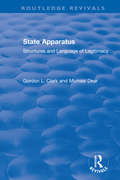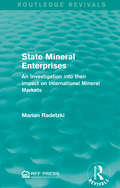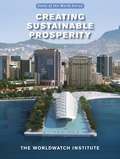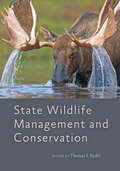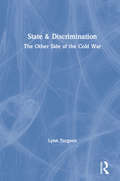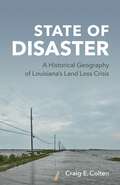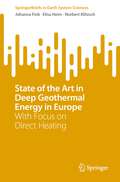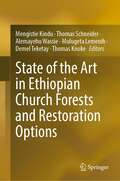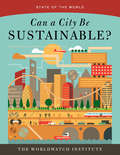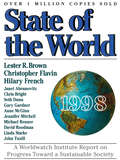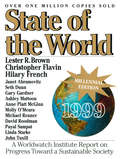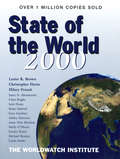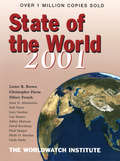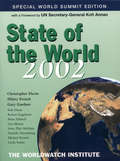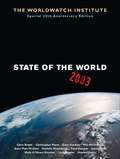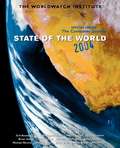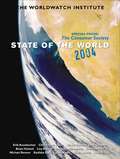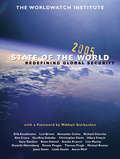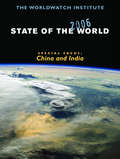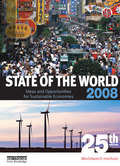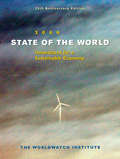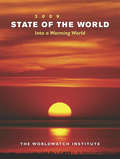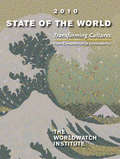- Table View
- List View
Starved for Science: How Biotechnology Is Being Kept Out of Africa
by Robert PaarlbergListen to a short interview with Robert Paarlberg Host: Chris Gondek | Producer: Heron & Crane Heading upcountry in Africa to visit small farms is absolutely exhilarating given the dramatic beauty of big skies, red soil, and arid vistas, but eventually the two-lane tarmac narrows to rutted dirt, and the journey must continue on foot. The farmers you eventually meet are mostly women, hardworking but visibly poor. They have no improved seeds, no chemical fertilizers, no irrigation, and with their meager crops they earn less than a dollar a day. Many are malnourished. Nearly two-thirds of Africans are employed in agriculture, yet on a per-capita basis they produce roughly 20 percent less than they did in 1970. Although modern agricultural science was the key to reducing rural poverty in Asia, modern farm science—including biotechnology—has recently been kept out of Africa. In Starved for Science Robert Paarlberg explains why poor African farmers are denied access to productive technologies, particularly genetically engineered seeds with improved resistance to insects and drought. He traces this obstacle to the current opposition to farm science in prosperous countries. Having embraced agricultural science to become well-fed themselves, those in wealthy countries are now instructing Africans—on the most dubious grounds—not to do the same. In a book sure to generate intense debate, Paarlberg details how this cultural turn against agricultural science among affluent societies is now being exported, inappropriately, to Africa. Those who are opposed to the use of agricultural technologies are telling African farmers that, in effect, it would be just as well for them to remain poor.
State Apparatus: Structures and Language of Legitimacy (Routledge Revivals)
by Gordon L. Clark Michael DearOriginally published in 1984, State Apparatus contributes to the debate on the theory of the state through posing questions regarding the state’s form, function, and apparatus. The book begins by setting out the theoretical and methodological problems and reviewing the various Conservative, Liberal and Marxist theories in light of these. It discusses state activity, using specific case studies to clearly illustrate key points, such as the development of welfare systems in North America and Western Europe. It also explores the use of language under the state, the role of the legal apparatus within a capitalist system, and the "local state". The book concludes with a discussion of democracy and the crisis of legitimacy, and the issue of justice and the state. State Apparatus is a detailed and comprehensive text, ideal for those with an interest in the history, theory, form, and function of the state.
State Mineral Enterprises: An Investigation into their Impact on International Mineral Markets (Routledge Revivals)
by Marian RadetzkiState ownership in mineral industries has increased massively from the 1950’s affecting the world mineral sector greatly. Originally published in 1985, this study analyses the effects this had on the international market covering topics such as state takeovers of mineral firms, price stabilisation methods, state-owned enterprises in developing countries and whether state ownership will negatively impact private multinational companies. This title will be of interest to students of environmental studies.
State Of The World 2012: Moving Toward Sustainable Prosperity
by The Worldwatch InstituteThis text, produced by the Worldwatch Institute, outlines the issues, concerns, and possibilities raised by the UN Conference on Sustainable Development, known as the Rio+20. The core issues for building a green economy are: degrowth in the developed nations; economic democracy; a shift from consumption-oriented renumeration to shortening work-time; pricing does not reward needless consumption of bulk-bought goods; shifting from obsolescence to durability, repairability and upgradability; curbing population growth and preserving biodiversity; sustainable and equitable food-systems; and local governance. As an international conference about sustainable development, the issues focus on building "a new global solidarity. " The authors rely on a mixture of planning and harnessing market forces. The text is laid out in teachable modules with sub-sections, graphs, and a minimum of math. The Worldwatch Institute is a think-tank and network of partners devoted to generating insights for decision-makers to make a sustainable human society. Annotation ©2012 Book News, Inc. , Portland, OR (booknews. com)
State Wildlife Management and Conservation (Wildlife Management and Conservation)
by Thomas J. RyderAn illuminating look at the challenges and triumphs of state wildlife professionals at the forefront of the fight to protect the American wilderness.The adage "think globally but act locally" defines the work of American wildlife professionals. Their contributions, from remote outposts to major cities, guard the natural world of the entire country. In State Wildlife Management and Conservation, Thomas J. Ryder brings together wildlife leaders from practical, policy, and academic backgrounds to tell the story of state wildlife agencies, chronicling their efforts to restore and protect our nation's natural resources.Reflecting the core principle of the profession—that the public, not any individual, owns wildlife—the book explains how this tenet became law, laying the groundwork for the history of state-level wildlife management that follows. The authors cover key issues, including the limits of private land ownership, the funding of wildlife regulation, the nuances of humanwildlife conflict, the role of law enforcement, disease control efforts, and the challenges involved in balancing the perspectives of hunters, nonhunters, and animal rights advocates. Detailed essays also discuss state management techniques for a wide range of wildlife, including big game and migratory birds. State Wildlife Management and Conservation is a comprehensive, nationwide account of state management efforts. It will aid professors training the next generation of wildlife professionals, students hoping to enter the profession, and anyone working with wildlife to develop a more sophisticated understanding of what it means to be a state wildlife biologist. Contributors: M. Carol Bambery, Gordon R. Batcheller, Chad J. Bishop, Vernon C. Bleich, Dale Caveny, David K. Dahlgren, Daniel J. Decker, Karie L. Decker, Thomas A. Decker, Billy Dukes, John D. Erb, John R. Fischer, Ann B. Forstchen, Jonathan W. Gassett, Parks Gilbert, Colin M. Gillin, Tim L. Hiller, Daniel Hirchert, Michael W. Hubbard, Mark Humpert, Scott Hygnstrom, Robert P. Lanka, Richard E. McCabe, Jennifer Mock-Schaeffer, Brian Nesvik, Shaun L. Oldenburger, John F. Organ, Ronald J. Regan, Michael A. Schroeder, William F. Siemer, Christian Smith, Randy Stark, Gary J. Taylor, J. Scott Taylor, Daniel J. Thompson, Kurt VerCauteren, Mark P. Vrtiska, H. Bryant White, Steven A. Williams
State and Discrimination: Other Side of the Cold War
by Lynn TurgeonThe author studies affirmative action efforts in four countries: two superpowers - the United States and the Soviet Union - and two non-superpowers - Canada and Hungary. Drawing on his knowledge of diverse societies, the author weighs the evidence to evaluate whether popular pressure for affirmative action is greater in the superpower than in the non-superpower nations. The book presents facts about the nature and historic development of state policy in the advanced capitalist and socialist countries, and raises insights that run counter to the common wisdom.
State of Disaster: A Historical Geography of Louisiana’s Land Loss Crisis
by Craig E. ColtenState of Disaster: A Historical Geography of Louisiana’s Land Loss Crisis explores Louisiana’s protracted efforts to restore and protect its coastal marshes, nearly always with minimal regard for the people displaced by those efforts. As Craig E. Colten shows, the state’s coastal restoration plan seeks to protect cities and industry but sacrifices the coastal dwellers who have maintained their presence in this perilous place for centuries. This historical geography examines in turn the adaptive capacity of those living through repeated waves of calamity; the numerous disjointed environmental management regimes that contributed to the current crisis; the cartographic visualizations of land loss used to activate public coastal policy; and the phases of public input that nevertheless failed to give voice to the citizens most impacted by various environmental management strategies. In closing, Colten situates Louisiana’s experience within broader discussions of climate change and recovery from repeated crises.
State of the Art in Deep Geothermal Energy in Europe: With Focus on Direct Heating (SpringerBriefs in Earth System Sciences)
by Johanna Fink Elisa Heim Norbert KlitzschSince nearly 50 % of Europe's energy demand is in the heating and cooling sector, it is expected that geothermal energy will play an important role in the transition to a decarbonized energy system. However, deep geothermal energy is currently harvested mainly from areas with very favorable geothermal conditions. As these areas are geographically limited, the use of geothermal energy in less favorable regions is essential for unleashing the full potential of geothermal energy, since they make up the majority of the total geothermal potential in Central Europe. Motivated by the growing interest in deep geothermal energy among, e.g., energy companies and communities, this text reviews the state of the art in deep geothermal energy with focus on direct heating in geothermally less favorable regions. It provides an overview of technologies used to generate heat from the deep underground and discusses main technical and non-technical risks associated with deep geothermal projects. The text addresses readers with an interest in geothermal energy but does not require a background in geoscience or engineering sciences. It is suitable as textbook for Geothermal Energy courses for undergraduate students from different disciplines.
State of the Art in Ethiopian Church Forests and Restoration Options
by Thomas Schneider Demel Teketay Mengistie Kindu Alemayehu Wassie Mulugeta Lemenih Thomas KnokeThis book, with contributions from leading academics - and including reviews and case studies from Ethiopian Church forests - provides a valuable reference for advanced students and researchers interested in forest and other natural resource management, ecology and ecosystem services as well as restoration options. The book addresses various aspects including a general overview of Ethiopian church forests, the present role and future challenges of church forests. It also discusses their structure and diversity in the context of sustainability and discusses restoration options for surrounding landscapes, under consideration of the circumstances of the land and the needs of surrounding communities. The intended readership includes natural resource professionals in general as well as forestry professionals in particular (practitioners, policymakers, educators and researchers). The book will provide the reader with a good foundation for understanding Ethiopian forest resources and restoration options of degraded landscape.
State of the World (State of the World)
by The Worldwatch The Worldwatch InstituteCities are the world's future. Today, more than half of the global population--3. 7 billion people--are urban dwellers, and that number is expected to double by 2050. There is no question that cities are growing; the only debate is over how they will grow. Will we invest in the physical and social infrastructure necessary for livable, equitable, and sustainable cities?In the latest edition of State of the World, the flagship publication of the Worldwatch Institute, experts from around the globe examine the core principles of sustainable urbanism and profile cities that are putting them into practice. State of the World first puts our current moment in context, tracing cities in the arc of human history. It also examines the basic structural elements of every city: materials and fuels; people and economics; and biodiversity. In part two, professionals working on some of the world's most inventive urban sustainability projects share their first-hand experience. Success stories come from places as diverse as Ahmedabad, India; Freiburg, Germany; and Shanghai, China. In many cases, local people are acting to improve their cities, even when national efforts are stalled. Parts three and four examine cross-cutting issues that affect the success of all cities. Topics range from the nitty-gritty of handling waste and developing public transportation to civic participation and navigating dysfunctional government. Throughout, readers discover the most pressing challenges facing communities and the most promising solutions currently being developed. The result is a snapshot of cities today and a vision for global urban sustainability tomorrow.
State of the World 1998: A Worldwatch Institute Report On Progress Toward A Sustainable Society (State of the World)
by The Worldwatch InstituteIn this fifteenth edition of State of the World, Lester R. Brown and the Worldwatch research team look at the environmental effects of continuing economic growth as the economy outgrows the earth's ecosystem. As the global economy has expanded from $5 trillion of output in 1950 to $29 trillion in 1997, its demands have crossed many of the earth's sustainable yield thresholds
State of the World 1999: A Worldwatch Institute Report On Progress Toward A Sustainable Society (State of the World)
by The Worldwatch InstituteWritten in clear and concise language, with easy-to-read charts and tables, State of the World presents a view of our changing world that we cannot afford to ignore.
State of the World 2000: A Worldwatch Institute Report On Progress Toward A Sustainable Society (State of the World)
by The Worldwatch InstituteState of the World 2000 shines a sharp light on the great challenge our civilization faces: how to use our political systems to manage the difficult and complex relationships between the global economy and the Earth's ecosystems. If we cannot build an environmentally sustainable global economy, then we have no future that anyone would desire.
State of the World 2001
by The Worldwatch InstituteFrom the thinning of the Arctic sea ice to the invasion of the mosquito-borne West Nile virus, State of the World 2001 shows how the economic boom of the last decade has damaged natural systems. The increasingly visible evidence of environmental deterioration is only the tip of a much more dangerous problem: the growing inequities in wealth and income between countries and within countries, inequities that will generate enormous social unrest and pressure for change.
State of the World 2002 (State of the World)
by The Worldwatch InstituteState of the World 2002 includes chapters on climate change, farming, toxic chemicals, sustainable tourism, population, resource conflicts and global governance
State of the World 2003 (State of the World)
by The Worldwatch InstituteThe challenges are still immense, of course, as the book also documents, but the building blocks for a historic reinvention of human civilization are now within reach.
State of the World 2004
by Linda StarkeIt focuses on consumption-one of the most central and also one of the most neglected elements in the global search for a sustainable future.
State of the World 2004: The Consumer Society (State of the World)
by The Worldwatch InstituteWith chapters on food, water, energy, the politics of consumption and redefining the good life, Worldwatch's award-winning research team asks whether a less-consumptive society is possible--and then argues that it is essential.
State of the World 2005: Redefining Global Security (State of the World)
by The Worldwatch InstituteIn State of the World 2005, Worldwatch researchers explore underlying sources of global insecurity including poverty, infectious disease, environmental degradation, and rising competition over oil and other resources. Find out why terrorism is just symptomatic of a far broader set of complex problems that require more than a military response.
State of the World 2006: China and India (State of the World #0)
by The Worldwatch InstituteState of the World 2006 provides a special focus on China and India and their impact on the world as major consumers of resources and polluters of local and global ecosystems. The report explains the critical need for both countries to "leapfrog" the technologies, policies, and even the cultures that now prevail in many western countries for the sake of global sustainability--and reports on some of the strategies that China and India are starting to implement. Besides the focus on China and India, State of the World 2006 looks at actions corporations can take to be more socially responsible; examines the potential socioeconomic, health, and environmental implications of nanoscale technologies; assesses the impacts of large-scale development of biofuels on agriculture and the environment; describes mercury sources, industrial uses, and health hazards worldwide; and provides an overview of the need to safeguard freshwater ecosystems, with examples of proven approaches in cities, villages, and farming regions around the world.
State of the World 2007: Our Urban Future (State of the World)
by The Worldwatch InstituteIn 2008, half of the Earth's population will live in urban areas, marking the first time in history that humans are an urban species. State of the World 2007: Our Urban Future examines changes in the ways cities are managed, built, and lived in that could tip the balance towards a healthier and more peaceful urban future.
State of the World 2008: Ideas and Opportunities for Sustainable Economies
by Worldwatch InstituteThe environmentalist's bible' Times Higher Education Supplement. 'Essential reading' The Good Book Guide. 'The most comprehensive, up-to-date, and accessible summaries ... on the global environment' E. O. Wilson, Pulitzer Prize winner. Celebrating its 25th year of publication, State of the World 2008 suggests that something huge and even revolutionary is struggling to be born as policymakers, business leaders and others around the globe create the architecture of sustainable economies. Featuring chapters on renewable energy, innovations in clean production, commons resources, trade policy, finance for sustainability, new economic yardsticks, and many other topics, State of the World 2008 is the first global-level publication to showcase a wide range of diverse innovations and to demonstrate their near-term potential to put whole societies on a sustainable path. Published annually in 28 languages, State of the World is relied upon by national governments, UN agencies, development workers and law-makers for its authoritative and up-to-the-minute analysis and information. It is essential for anyone concerned with building a positive, global future.
State of the World 2008: Innovations for a Sustainable Economy (State of the World)
by The Worldwatch InstituteEnvironmental issues were once regarded as irrelevant to economic activity, but today they are dramatically rewriting the rules for business, investors, and consumers. Around the world, innovative responses to climate change and other environmental problems are affecting more than $100 billion in annual capital flows as pioneering entrepreneurs, organizations, and governments take steps to create the Earth's first "sustainable" global economy.
State of the World 2009: Into a Warming World
by The Worldwatch InstituteIt's New Year's Day, 2101. Somehow, humanity survived the worst of global warming--the higher temperatures and sea levels and the more intense droughts and storms--and succeeded in stabilizing the Earth's climate. Greenhouse gas concentrations are peaking and are expected to drift downward in the 22nd century. The rise in global temperatures is slowing and the natural world is gradually healing. The social contract largely held. And humanity as a whole is better fed, healthier, and more prosperous today than it was a century ago. This scenario of an imagined future raises a key question: What must we do in the 21st century to make such a future possible, and to head off the kind of climate catastrophe that many scientists now see as likely? This question inspires the theme of the Worldwatch Institute's State of the World 2009 report: how climate change will play out over the coming century, and what steps we most urgently need to take now.
State of the World 2010: Transforming Cultures From Consumerism to Sustainability (State of the World)
by The Worldwatch InstituteLike a tsunami, consumerism has engulfed human cultures and Earth's ecosystems. Left unaddressed, we risk global disaster. But if we channel this wave, intentionally transforming our cultures to center on sustainability, we will not only prevent catastrophe, but may usher in an era of sustainability--one that allows all people to thrive while protecting, even restoring, Earth. In State of the World 2010, sixty renowned researchers and practitioners describe how we can harness the world's leading institutions--education, the media, business, governments, traditions, and social movements--to reorient cultures toward sustainability.

